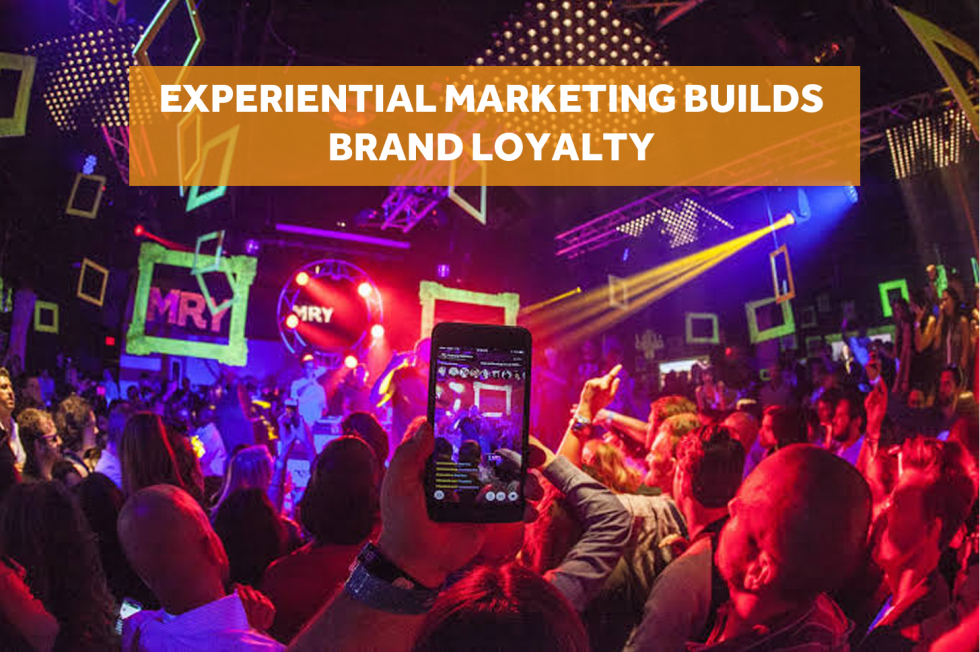Strong brands are created through the delivery of consistent, relevant and distinctive messaging, imagery and experiences to targeted demographics. Event branding offers organizations a chance to amplify awareness and their message– using best practices in experiential to offer impactful and memorable experiences. Through the power of distinctive, strategically placed branding, businesses can leverage their event to create maximum brand impact – but it’s only through a thoughtful and cohesive approach. In essence, properly representing your brand and shaping how your attendees, partners and sponsors remember it affects the success of an event. In fact, 79% of marketers cite increased brand awareness as the focus of B2B content marketing*. Source: Content Marketing Institute
In industries where the market is saturated, your core brand message tends to get lost. With so many companies speaking about the same product using similar narratives, how can your brand stand out? A whopping 45% of a brand’s image can be attributed to what it says and how it says it*. Source: Landor, Mumbai. Communicating your core message using an interesting narrative throughout your event branding is especially important where the attendee journey is concerned. Whatever the goal of your event is – whether it’s to increase brand exposure, generate awareness around a product/service or drive lead generation – the journey an attendee takes from entrance to exit needs to be subtly and strategically designed.
With all elements of the event working in sync, the customer journey should be seamless – that way, your audience will have the most immersive and engaging experience possible. Maintaining a sense of perspective throughout the event branding process guarantees results. It’s by keeping one eye on the big picture, exploring how different elements interact and how they work to communicate your core message, that you’ll deliver a meaningful and memorable event.
Case in point: Shobiz worked with Vivo, a telecom major, to bring attention to their latest product-the Vivo V15. Vivo’s new phone had a pop up feature; the first in its segment and we needed to communicate this in a way to draw attention to the brand. To harness the power of brand conversations on social media, we used hologram projections of the tagline; #GoPop in key metro cities in India and branding on vans as a pre-launch campaign that would build the message online. We encouraged our target demographic i.e. tech savvy “metro millennials” to post pictures of the vans on social media in exchange for a chance to win Vivo branded merchandise.
We continued to emphasize on the brand at the event, with SWAG bags, billboards and posters to ensure that Vivo had top of the mind recall amongst attendees.
Using effective branding at key customer touchpoints will help your audience increase brand recall and will result in higher lead generation.
- Event website: This is the first touchpoint that your (potential) customer has. Drive your narrative through an engaging design and informative content.
- E-mail marketing: E-mail still is the most effective channel for promoting events. E-marketing gives you the ability to directly reach out to prospective attendees, event sponsors, speakers and partners. Once delegates have registered for your event, email will be your primary channel for communicating important updates and reminders to them.
- Event apps: In the era of digital and mobile communication, event apps have now become the norm. Apps contain a range of content that keeps delegates informed about what they can expect at the event. During the event, it provides an opportunity to participate in polls, quizzes, etc and keep the conversation going. Apps also provide important feedback to event managers especially how delegates perceive your brand through their experience.
- Social media: Like event apps, brands leverage social media to communicate their message. Having an event hashtag will make it easier for people to talk about your event, while having a handle or page will make it easier for people to learn about your event. Not only will this help you in solidifying your event brand, it will also make it easier to track and analyse discussion about your event.
- Venue branding: A visually appealing layout with creatively used elements invites attendees to participate in brand conversations, think selfie zones, jenga blocks, immersive elements, social walls, projection mapping, etc. A well thought out layout communicates your core message effectively.
- SWAG: It’s hard to pass up free. Swag gives you the very real opportunity to spread your brand to households across the globe. To get the most out of your free branded giveaways, make them something that people will want to use.
- Post event engagement: To keep the momentum going, it’s important to include post-event communication. Personalized thank you notes are a great way to spread love to attendees while surveys allow you to collect relevant data to optimize your next event. Design surveys that give you insights on a multitude of attendee experiences.
